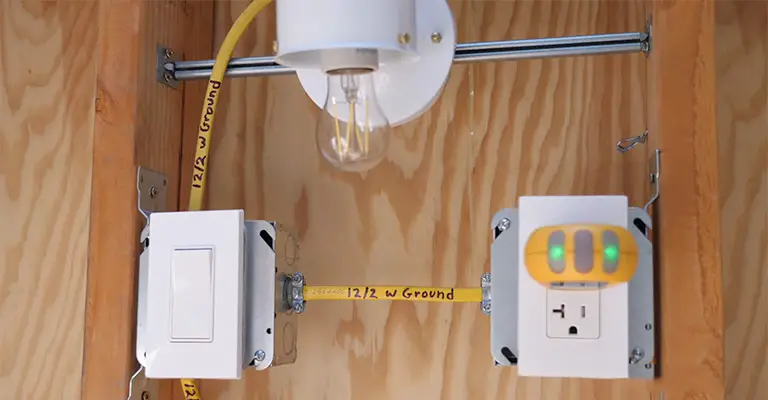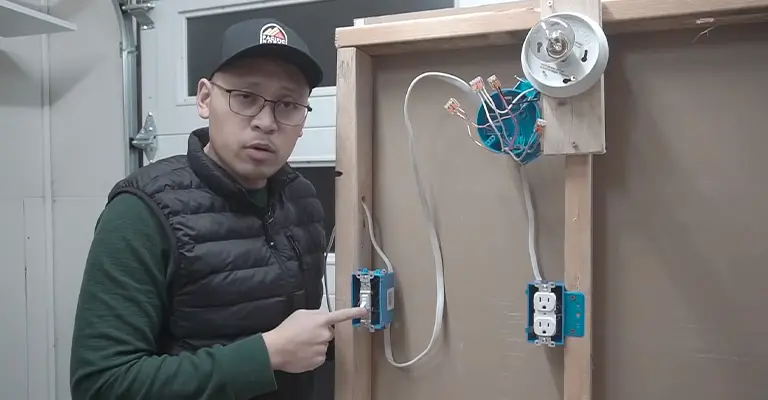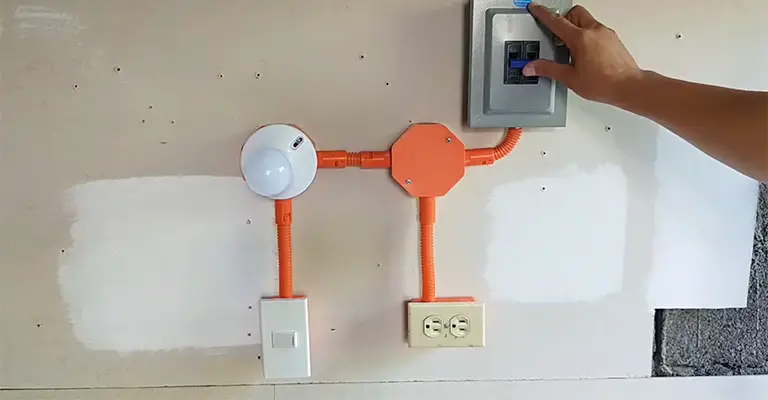Welcome to our tutorial on wiring lights and outlets on the same circuit. This post will walk you through the steps necessary to install multiple electrical devices safely and effectively on the same circuit in your home.
Wiring lights and outlets on the same circuit can be a convenient way to expand the electrical capabilities of a room without the need for additional circuits or outlets.
However, following proper safety protocols and adhering to local building codes are essential to ensure the installation is done correctly.
We will provide you with a step-by-step guide on how to wire lights and outlets on the same circuit and some tips and considerations to keep in mind. Let’s get started!
Residential houses usually have an indoor electric distribution board (also called a breaker panel or electric panel) where most circuit breakers for indoor circuits are located.
For so-called “general lighting,” circuit breakers of 15A are most commonly used. It is connected to two AC outlets and two lights on the circuit branch controlled by the 15A circuit breaker.
Even though lights and outlets are on the same circuit, it’s poor planning. A blown a fuse can also cause the resident to go dark if the circuit at the receptacle gets overloaded.
A separate lighting circuit is usually installed because lighting draws minimal current, so much thinner wire can be used, which makes it cheaper to install.
There are no normal outlets on lighting circuits since many appliances would blow a fuse, but there may be special low-power outlets for shavers and other appliances.
Can I Wire Lights And Outlets On The Same Circuit?

It seems convenient to wire lights and outlets together. Is it possible? You shouldn’t just ask that question, even if it’s the main concern of homeowners.
The answer is yes. In an average residence, the breakers of the majority of circuits are housed in an indoor distribution board.
Generally, contractors use 15A circuit breakers for general lighting, and outlets can also be added to those circuits.
As well as determining whether it’s legal, you should also determine how it’s done. There is no guarantee that the regulations will allow you to wire your lights to the same circuit as an outlet.
In this article, you will learn why homeowners and electricians support and oppose this idea.
Why It Isn’t a Good Idea to Place Lights and Outlets on the Same Circuit
Regarding lights and outlets, three main considerations should be kept in mind:
Cost

Separate lighting circuits are cheaper to install. Because lights consume very little electricity, this is the case. Due to this, very thin wires are required.
Many homes in the early 1900s used simple appliances with lower loads, such as desk lamps and fans, to facilitate this practice.
A modern home contains many appliances with a much higher likelihood of overloading the circuit and blowing a fuse.
Practical Concerns

You will lose power to the outlet if you plug an appliance into the outlet and it blows a fuse and the lights.
There is one circuit breaker for both the outlets and the lights. Therefore, you shouldn’t be surprised to learn they’ll suffer the same fate as you.
Blowing a fuse can also cause total darkness in your home. To avoid this problem, homeowners tend to use two separate circuits for lights and outlets.
The Law
There are some places where authorities require that outlets and lights be installed on different circuits. Depending on your local codes, contractors may not connect lights and outlets on the same circuit.
How To Wire Lights And Outlets On The Same Circuit?

Taking on this task isn’t easy. Those at ask.the.electrician.com believe that the project requires intermediate to advanced skills and experience. For installation, homeowners should hire a licensed contractor.
You cannot ensure your safety any other way. It will involve the following steps if you are experienced in wiring and electrical installations:
- To get started, you will need an electrical box. Depending on local regulations, the location of the box will vary. According to Hunker, it is best placed 44 inches from the ground. You will comply with the ADA once this is completed. It is also a good idea to place the box near the door.
- A cable from the light fixture to the outlet and one from the outlet to the light fixture are required. It is unsafe to proceed until the circuit breaker has been turned off. The task will become less dangerous as a result. Make sure the leads are checked with a tester.
- Connect the electrical box cable to the load terminals (Black to the brass terminal, green to the green ground terminal, white to the chrome terminal) once you are certain that the outlet leads are dead (the black wire to the brass terminal, gray to the chrome terminal).
- Using the cable between the outlet and the switch box is the same as using a regular line cable. It is possible to receive the black wire at one of the switch terminals. Other switch terminals can be connected to the black wire running to the fixture.
- Wrapping up the white wires can be done by twisting and capping them. Make sure you connect the ground wire to the applicable terminal (ground).
More information is available on the Sparky Channel if you still have questions. In addition to his extensive experience in the field, the gentleman giving the explanation is also a teacher. It is for this reason that you can trust his approach.
If the receptacle mishaps, you should remember that the lights could be affected. When you plug in an appliance that draws a lot of power, your lights could dim even if you don’t blow a fuse.
Some electricians are convinced that this fear is unfounded. Because of the way many homes are wired today, they believe that such trips are uncommon. If a trip occurs, you will likely only experience lighting issues in one area of your home.
Therefore, you should be able to find the circuit breaker easily, thanks to enough sources of light nearby.
The concept of using a single circuit for lights and receptacles is also supported by proponents who believe that by doing so, homeowners can cut down on the number of AFCI units they need since many jurisdictions require AFCI outlets in bedrooms.
Conclusion
You should start by contacting the local authorities if you intend to mix lights and receptacles. The house belongs to you. Finally, you must ensure the wires are wired according to regulations and codes in your area.
The regulations may require you to use separate circuits for the lights and outlets. You can mix circuits if your local laws don’t restrict you. A convenient option, it is.
However, you should also be aware that an outlet malfunction will affect your lights. It is possible to kill all your lights by tripping a breaker due to an appliance at an outlet.
You will also need to turn off the lights if you shut off the power to the outlets, for example, to do repairs.
You may need help with this if you are performing repairs at night. You should therefore use separate circuits to avoid this problem.






